Quick Overview: LEGO had already built a strong moat before its patents expired. LEGO has consistently invested heavily in areas such as the Research Institute, Design Process, Plastic, Quality Control, Injection Molding, Patents, Intellectual Property Licensing, Marketing, and Sustainability. This has continuously enhanced LEGO’s brand reputation, while also increasing its collecting and resale value. These combined factors are the key reasons for LEGO’s sustained leadership.
I’ve learned that many friends are curious about how JMBricklayer creates such beautiful building blocks. Before unveiling the secrets, I would like to explain how LEGO operates. This will help everyone better understand just how amazing JMBricklayer truly is in the following articles!
The joy of assembling colorful plastic bricks can transport you back to a carefree childhood. However, there’s a sobering reality that has puzzled LEGO enthusiasts for years: Why is LEGO so expensive? In this article, we will unravel the mystery of LEGO by exploring the complexities of its production and design, as well as the undeniable allure that makes LEGO not just a toy but a cultural phenomenon.
The History of LEGO Before Its Great Success
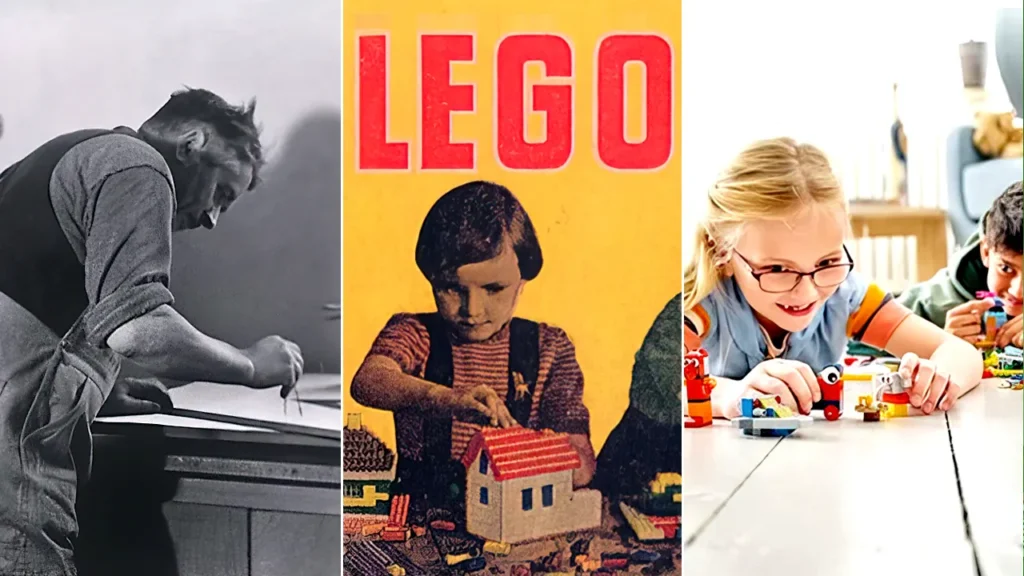
Before explaining why LEGO sets are so expensive, I want to share a bit of history that will give you a deeper understanding of their value.
Firstly, even before LEGO’s patent expired in 1978, low-quality knock-offs started to appear. These imitations didn’t use the exact same interlocking system, as it was still under patent protection.
In the 1970s, LEGO began to emerge as a dominant building toy, though they hadn’t completely locked down the market yet. When LEGO’s patent expired in 1978, one might have expected a flood of competitors to enter the market. However, that wasn’t the case. A company named Tyco Super Blocks challenged LEGO but eventually failed. Tyco was actually a reasonably good competitor in terms of clone products, but they couldn’t beat LEGO’s brand reputation, and their system wasn’t as diverse. Over the decades, LEGO added mini-figures, Technic sets, a variety of hinges, arches, windows, and more to their products. Tyco made a significant effort but didn’t succeed.
Later, other brands entered the market, such as Mega Bloks, Cobi, Best-Lock, etc., but is still somewhat lacking compared to LEGO. This helped solidify LEGO’s status as a high-quality toy. If (as a parent) you bought other brands for your children, you’d see firsthand that their bricks didn’t fit as well, broke more easily, and lacked the good design feel of LEGO.
Another important aspect to note is that LEGO has established itself as a very positive brand. LEGO avoids direct conflict, modern military themes, religious symbols, and sexuality. It maintains a very positive, family-friendly atmosphere, conveying the message of “providing healthy, educational, fun, and quiet play for children.” For children and parents who bought LEGO before the late 1990s, this was their impression of the LEGO brand.
From then on, LEGO began to achieve great success. Numerous major media outlets, like WSJ Video, have reported on “Why Are Legos So Expensive?” You can get a quick overview of the situation from this video.
Foundation of LEGO Pricing
The factors influencing the price can be said to be countless, but here I hope you can understand the elements that other brands cannot achieve. This is also the main reason why LEGO’s prices are so high.
LEGO Research Institute
LEGO has invested a significant amount of time and resources into extensive research. This includes studying market trends, customer preferences, and emerging technologies to identify potential gaps and opportunities.
According to the company’s 2020 annual report, LEGO releases an average of over 850 sets each year, with new products accounting for 55% of its product portfolio annually. These products require research, testing, and in some cases, the development of specialized machine parts before they reach the market. The report also states that LEGO spends over $138 million on R&D annually, Additionally, in 2020, LEGO spent approximately $1.8 billion on R&D.
This expenditure includes creating new product designs, testing materials, and improving production processes. Such high R&D costs nearly led LEGO to bankruptcy almost 20 years ago.
LEGO Design Process
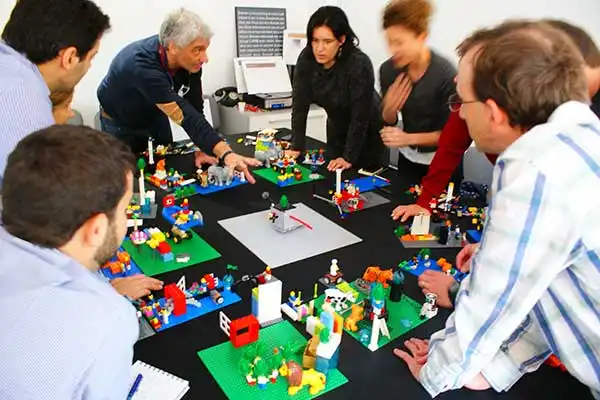
The team of LEGO designers, engineers, and researchers conducts in-depth analysis to identify new concepts and ideas. They create and test prototypes through focus groups and playtesting sessions to gather feedback and make necessary improvements.
LEGO® has a team of designers who must adhere to strict company guidelines before a set can be considered for mass production. Here are some examples:
- Clean Concept: The set should not involve violence, drugs, or nudity, nor should it feature the logos of other brands. For example, you won’t find sets with tanks or fighter jets, which are popular products from other brands like Cobi.
- Play Value: This is highly valued by LEGO®, as they sell toys. The set must be appealing, fun to build, come with clear instructions, and include interactive elements to enhance playability.
- Structural Stability: Even if a design is outstanding and meets all the above criteria, it won’t be successful if it doesn’t hold together tightly.
- Part Selection: LEGO® does not consider sets that would require the creation of many new, set-specific parts.
One notable initiative is LEGO Ideas, a program that invites MOCers worldwide to submit their designs. Many new features in the LEGO® catalog originate from this program, though they undergo thorough review and adjustments by LEGO® designers.
Creating molds and building elements is crucial to maintaining relevance and appeal to their target audience. Investing in unique LEGO designs and molds paves the way for innovation that attracts children and customers. During this process, LEGO collaborates with experts from various fields, such as child behavior specialists, to ensure their products not only provide entertainment but also aid in cognitive and social development.
Using the Lego City police station as an example, I will explain its development process.
To redesign the police station, Lego’s designers visited a local police station in Denmark to experience life there firsthand. Throughout the conceptualization process, the designers constantly challenged themselves to view the real police station from a child’s perspective.
With a commitment to both children and their parents, the police station needed to feature iconic police equipment but avoid any elements of violence. For instance, you won’t see any guns in this set. The components are designed to be simple yet fun, ensuring that children can handle and build them. The sculptor even observed German Shepherds for several months to capture their expressions accurately, just to create a new 3cm police dog design.
The samples were initially handcrafted from clay, with the sculptor fine-tuning the shapes using carving tools. Transforming the clay models into plastic form took a considerable amount of time. Although the previous police station series was already highly developed, the designers continually pushed the team to think, “What new ideas have we never considered before? What can we create that will make people wonder why they didn’t think of it earlier?”
What Plastic is LEGO Made Of
Rising production costs are gradually impacting LEGO’s retail prices, significantly affecting the market. LEGO’s engineering standards are exceptionally high. Most LEGO bricks are made from a high-quality, food-grade engineering plastic known as ABS, which theoretically does not fade over time. This plastic is renowned for its resilience and strength, allowing your LEGO sets to be used for years without wear and tear. Additionally, these plastics are non-toxic and odorless. Highly automated injection molding processes shape these pellets into bricks.
Other materials used include high-impact polystyrene for baseplates, polypropylene for accessories, and thermoplastic polyester for transparent parts. The company currently lists 12 types of plastic used in its product range.
Moreover, the company heavily invests in research and development. The LEGO Group has invested 1 billion DKK to enhance research into sustainable materials, a level of investment that many other brick companies cannot afford.
Fluctuations in oil prices and the supply and demand of plastics play a crucial role in determining the cost of these raw materials. Additionally, technological advancements in manufacturing, such as automation and robotics, also impact production costs.
LEGO Quality Control
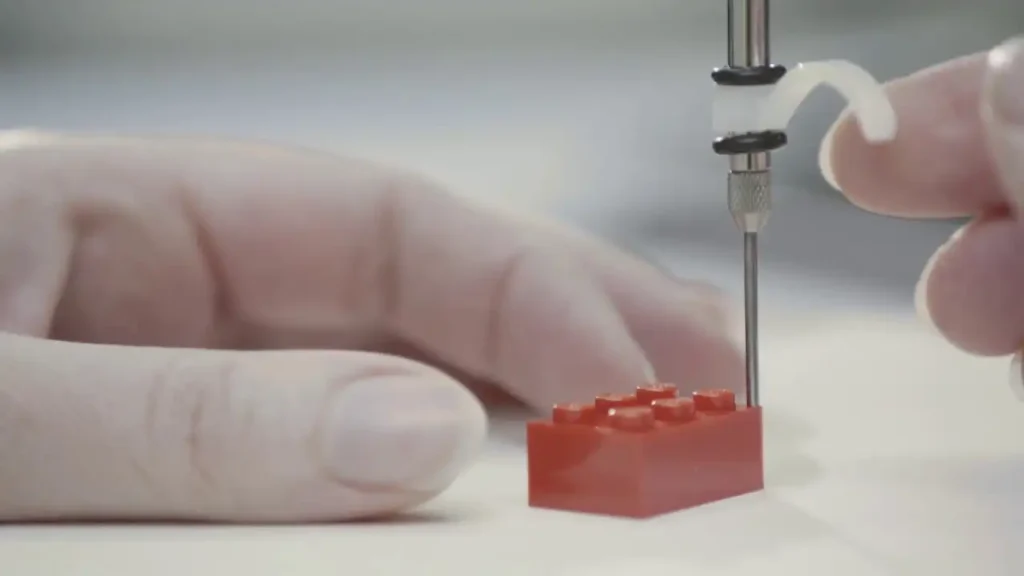
Lego’s commitment to quality extends far beyond the manufacturing process. The company employs a multi-layered quality control system that covers every aspect of brick production. From automated visual systems capable of detecting even the tiniest defects to manual inspections by highly trained technicians, every brick undergoes rigorous scrutiny. This dedication to quality ensures that each Lego brick meets the company’s high standards and is ready to provide years of creative play.
Once cooled and ejected from the mold, the bricks go through a stringent quality control process. Each brick is checked for defects to ensure that only those meeting Lego’s strict standards proceed to the packaging stage. This meticulous attention to detail is crucial for maintaining Lego’s consistent fit and durability.
At the Open University, engineers placed a 2×2 Lego brick into a hydraulic press to measure the pressure it could withstand before breaking or deforming. Dr. Ian Johnston found that a Lego brick can endure 4,240 newtons of pressure, equivalent to 953.1899 pounds-force or 375,000 Lego bricks. Theoretically, the bottom brick should be able to support a Lego tower 2.17 miles high.
Therefore, when you consider these characteristics alongside the various environmental tests each brick undergoes before reaching store shelves (durability checks, drop tests, etc.), it becomes easier to understand why these seemingly simple toy bricks command a higher price than many other toys on the store shelves.
LEGO Injection Mold
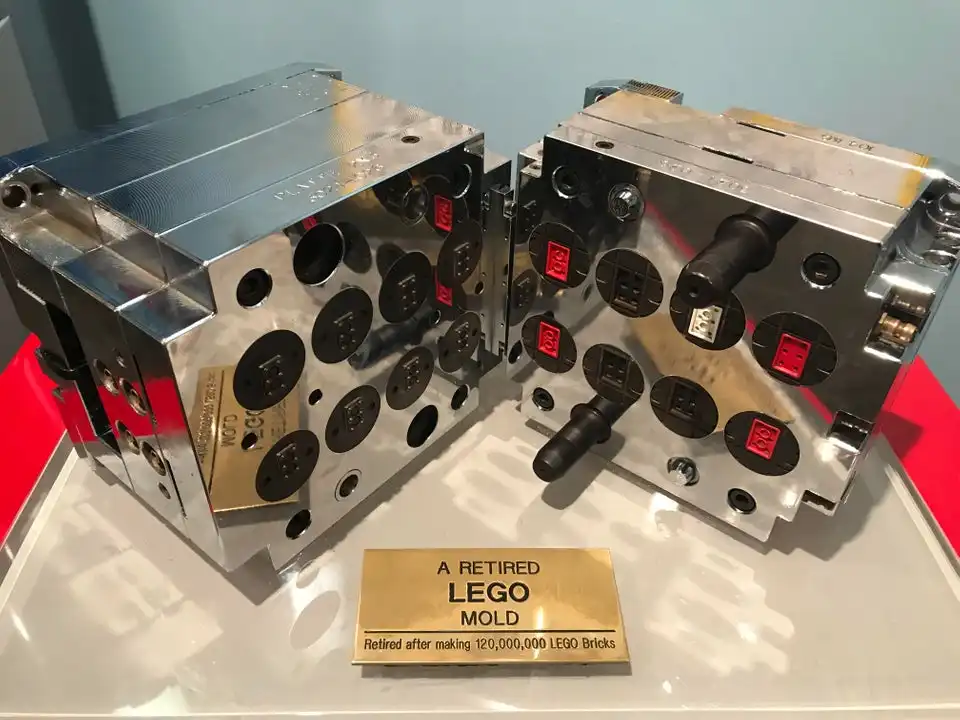
The mold is the heart of the entire operation process and the most expensive component during molding. Each mold costs over 2 million dollars, and some can even cost as much as 100,000 dollars (though these are for very complex molds).
Producing LEGO bricks requires high temperatures and large-scale equipment, so most components can only be managed by machines rather than manually. All basic LEGO components are interconnected using this principle. They come in various shapes and sizes, including wheels, windows, doors, and hollow bricks without studs. However, basic components are variations of the general LEGO brick.
When ABS granules enter the LEGO production facility, they are vacuum-dried and then pushed into silos. A typical LEGO workshop has about 14 silos, each capable of storing 33 tons of ABS granules. During production, these granules are piped into injection molding machines. The machines use highly precise molds with tolerances ranging from 0.002 to 0.0004 millimeters, which is ten times thinner than a human hair.
Each brick must achieve near-impossible precision levels; every brick must not only fit perfectly with the set it belongs to but also interlock with every brick produced since 1958. With six identical 2×4 basic bricks, you can create 915,103,765 different combinations. Furthermore, LEGO parts must pass quality checks, ensuring that the production tolerance does not exceed 1% centimeter, with specialized machines testing every detail of each part.
The machines melt the granules at 232 degrees Celsius, then inject the molten ABS into molds under 25 to 150 tons of pressure. After about 7 seconds, the newly formed LEGO bricks cool down and fall onto a conveyor belt. At the end of the conveyor belt, they drop into a box.
When a box is full, the molding machine signals a robot, which then picks up the box and delivers it to the assembly workshop. In the Billund factory, eight robots move 600 boxes of bricks per hour. In the assembly workshop, machines imprint patterns onto bricks and assemble multi-brick components, such as minifigures. The machines assemble components by applying precise pressure to specific parts.
Additionally, each LEGO brick has three numbers indicating the mold’s position and the mold used to produce it. This numbering system allows for quick identification and repair of defective molds. The precision level is so high that out of every million bricks produced, only about 18 do not meet the company’s high standards. If the parts are not precise, the entire toy will fall apart.
This is why different series of LEGO bricks are compatible with each other. Even LEGO bricks from 1958 can perfectly fit with those purchased today. If a part of your favorite LEGO set is damaged or lost, LEGO can replace that part. It’s not like a jigsaw puzzle where there would be an obvious gap where the missing piece should be, nor does the toy stop functioning due to a missing part. You don’t need to buy a whole new set; you can just purchase the missing piece.
Manufacturing millions of interlocking LEGO bricks and parts is a challenge competitors must overcome. The price might be high, but considering that parents buy expensive LEGO toys for their children as gifts, their grandchildren, and great-grandchildren can still play with them.
LEGO Health and Safety
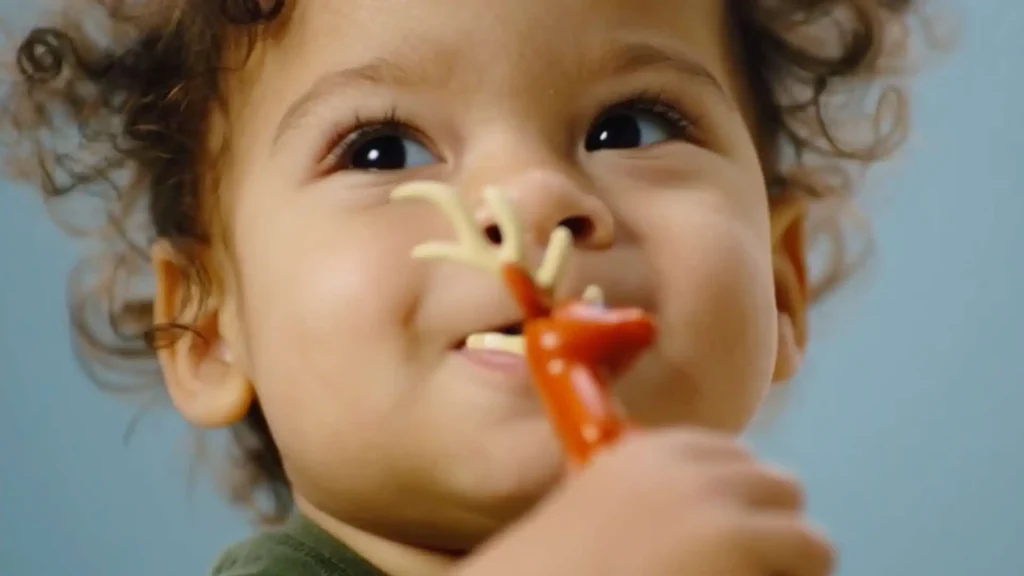
After the research phase is completed, LEGO’s professional design team will transform these ideas into prototypes and conduct rigorous testing to ensure they meet the highest quality and safety standards.
Since plastic toys come into direct contact with children’s skin, safety is a paramount concern. LEGO’s plastic pellets undergo strict processing at 250 degrees Celsius and 120 tons of pressure (equivalent to three trucks) before they are considered essentially complete. Only non-toxic dyes are used, and no sharp edges are allowed. The molds are inspected and maintained by technicians every three weeks.
Of course, beyond molding, there are subsequent steps such as coloring and decorating, packaging, and distribution, all carried out methodically. From the early stages of research and development to the later stages of production, LEGO’s stringent requirements and deep understanding of their products go far beyond the value of the bricks themselves, embodying their principle: “Only the best is good enough.”
This perhaps is the key factor to their success, keeping the reputation of LEGO toys strong to this day.
LEGO Patent
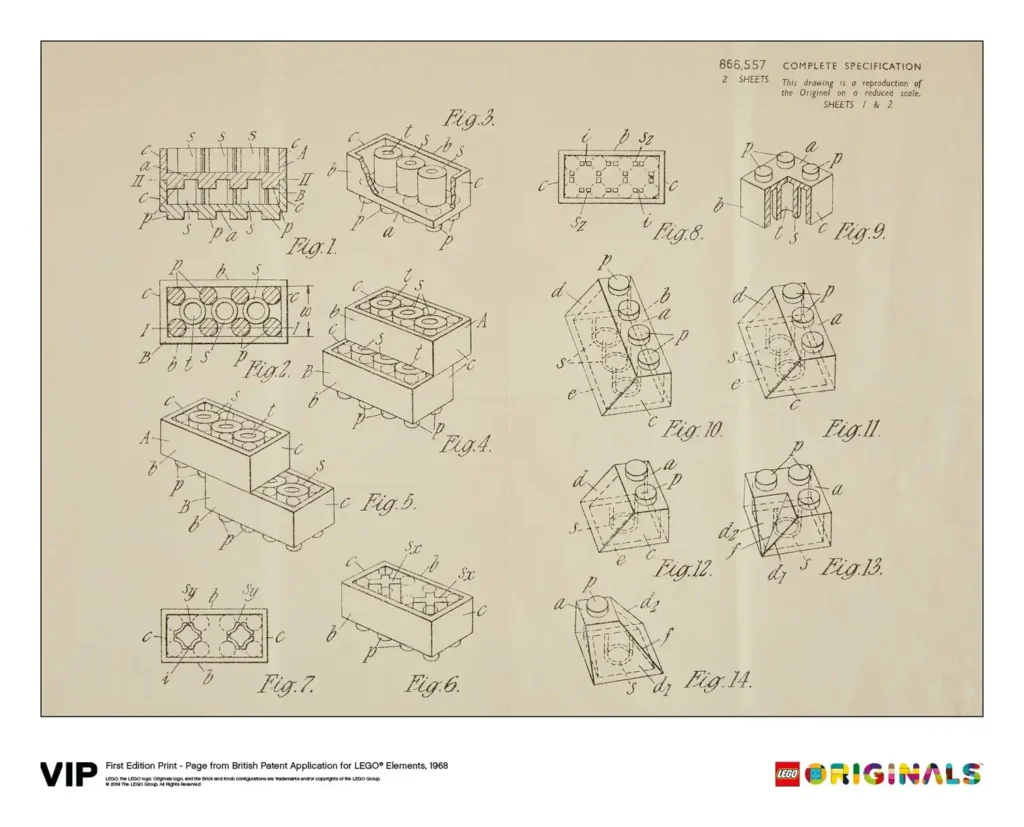
LEGO holds over 5,000 patents worldwide, many of which are for the shapes of their building blocks. Other building block manufacturers are prohibited from producing blocks with the same shapes. LEGO bricks are essentially a form of precision manufacturing. The main reason why other building block manufacturers haven’t been able to produce equivalent alternatives for many years is due to the high cost of creating molds with such precision.
Other Factors
Although these factors are not fundamentally what sets LEGO apart from other brands, it is undeniable that LEGO is also far ahead in these areas.
LEGO Production Cost

In addition, factors such as labor costs, transportation fees, and changes in taxes and regulations can further impact overall production costs and ultimately affect the retail price of LEGO products.
In recent years, LEGO’s production costs have been steadily increasing due to various factors. Labor costs have been rising steadily, particularly in LEGO’s main production base in Denmark. Additionally, disruptions in the global supply chain and rising energy prices have caused fluctuations in the costs of raw materials like plastic. Transportation fees have also surged significantly, making it more expensive to ship LEGO bricks from manufacturing plants to retail stores around the world.
These rising production costs have inevitably affected the prices of LEGO sets. While LEGO has made efforts to absorb some of these costs, the company has also had to pass a portion of the increased costs onto consumers.
Intellectual Property Licence
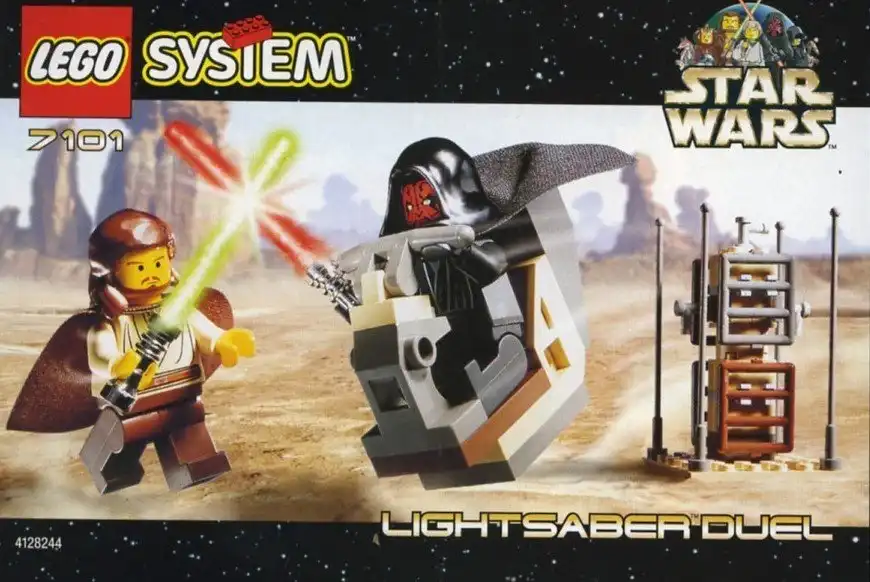
Lego continuously forms strategic licensing agreements with well-known and iconic brands to expand its product range and attract a wider audience.
Some of Lego®’s most popular products come from famous IPs such as Batman, Spider-Man, Harry Potter, Fortnite, Star Wars, Disney, Indiana Jones, and Super Mario, which require costly licensing fees. Even Lego® Architecture sets must pay substantial licensing fees.
The specifics of each licensing agreement vary but may include fixed fees per licensed product sold and royalties. In 2020, Lego spent around $500 million on “license and royalty fees.” Lego doesn’t absorb these costs; they pass them on to consumers. These costs are ultimately reflected in the prices of Lego sets featuring licensed characters or themes. How much do these costs add to the price of toys? Here’s a great explanatory video that examines the data and calculates the average cost of bricks in licensed and unlicensed sets.
These fees cover the rights to use these iconic characters and their related storylines in Lego sets, video games, and other merchandise. Additionally, Lego typically pays ongoing royalties based on a percentage of sales generated by licensed products. These costs significantly increase the overall expenses associated with producing and selling Lego sets.
While these licensing agreements might seem expensive, they are a necessary step to stay relevant in the current trend market.
These partnerships enable Lego to create sets and themes based on beloved characters, movies, and franchises, thus attracting the existing fan base of these assets. These licenses play a crucial role in expanding the Lego universe, further attracting a broader audience of both children and adults.
To this end, Lego not only pays significant fees to acquire the rights to use these high-value intellectual properties but also invests in R&D to ensure that the toys accurately depict the characters and storylines.
As a result, these licensing fees undoubtedly affect Lego’s pricing, often leading to higher retail prices for its licensed sets compared to non-licensed ones.
Lego believes the benefits of licensing outweigh the costs. Licensing allows the Danish company to leverage the recognition of existing brands and even helps introduce Lego to new audiences. Additionally, licensed Lego sets often have a higher perceived value than non-licensed sets, making them more attractive to consumers.
Despite the added costs, Lego’s licensing partnerships have been hugely successful. These partnerships help expand the Lego universe and attract a wider audience, thereby enabling Lego’s business to grow and become one of the world’s leading brands.
LEGO Durability, Collecting, and Resale Value
Lego retires a batch of toys every two years. These Lego sets not only enrich childhood memories but also become potential investments. Once they are no longer available, their prices on the secondary market increase. Some bricks can be bought for 50-75% of the original price, and some exclusive or limited-edition sets sell for significantly more than the retail price, fetching enormous sums. Unopened boxes and sets related to popular series or limited editions appreciate in value over time, making them highly attractive to collectors.
The most popular Lego sets come from movies, Star Wars, Marvel, and Harry Potter series. Mini-figures are also highly sought after by collectors, increasing the value of the sets. In fact, mini-figures are often the most valuable part of a set, with the most expensive ones selling for hundreds or even thousands of euros.
The long lifespan of Lego® bricks is another reason for their high cost. Lego® bricks are often passed down from generation to generation, unlike most mass-market toys today. For better or worse, Lego® realizes that its plastic is “too” durable and does not degrade, so they are looking for more eco-friendly materials.
Therefore, you can not only enjoy the fun of building and playing with Lego creations but also turn them into valuable assets. It’s like owning a small pile of bricks that might be worth a lot of money someday! Let’s face it—who wouldn’t want that?
Curious about the value of the Lego sets you own? I recommend checking out my article: “Do My Old LEGOs Have Value?” This quick guide will help you determine if your old Lego sets are valuable. Learn how to use various tools to check their worth.
LEGO Marketing

LEGO understands the importance of first impressions, and its packaging captures the essence of the brand. Promoting licensed themes requires substantial marketing and advertising expenses. Leveraging TV commercials, online ads, social media platforms like Instagram, Facebook, and YouTube, as well as collaborations with influencers, LEGO boosts brand awareness. Collaborating with popular influencers and content creators helps promote the brand name. The goal is to reach existing LEGO fans and a broader audience familiar with the licensed content.
LEGO establishes strategic partnerships with major online and offline retailers to enhance the visibility and availability of LEGO products. Email marketing campaigns and personalized newsletters further cultivate customer loyalty and keep enthusiasts updated with the latest news.
Advertising through traditional media like television and online platforms requires significant financial investment to ensure brand recognition and impact. Additionally, securing prime shelf space in retail stores, especially during peak seasons or in high-traffic areas, can be costly but is crucial for maximizing visibility and attracting customers.
LEGO Brand Reputation
Over the years, LEGO has established an excellent brand reputation, recognized for its exceptional quality, unparalleled durability, and boundless creativity.
LEGO® is the undisputed king in the building blocks sector, and its brand itself is highly esteemed. Anyone who gives a LEGO® set as a gift knows it will not disappoint: LEGO® is synonymous with quality and an exceptional building experience. These qualities have earned deep trust and admiration among consumers.
The interaction between brand recognition and demand is crucial for LEGO’s ability to maintain high prices. Collectors eagerly seek rare and vintage LEGO sets, driving up their value and further solidifying LEGO’s brand effect. Additionally, the brand’s enduring appeal across generations continues to attract new fans, ensuring a steady demand for its products. Consumers view LEGO as a high-value brand and are willing to pay a premium for the quality, durability, and creative possibilities it offers.
According to BrandFinance, in 2015, LEGO surpassed Ferrari to become the world’s most powerful brand. Furthermore, LEGO’s outstanding marketing has made it the world’s largest toy brand, with a brand value estimated at $7.51 billion.
Popularity and a good reputation enable the company to charge a premium, ensuring profitability while maintaining its reputation as a high-end brand. Thus, LEGO® can command higher prices, much like how high-end brands like Apple, Nike, Honda, or Levi’s can make a piece of clothing more expensive; the LEGO name printed on plastic bricks also elevates their price.
LEGO Sustainability

Lego’s commitment to sustainability is a key factor in the higher prices of its products. They have implemented various initiatives to minimize environmental impact and create a more sustainable future.
For example, Lego introduced projects like “Lego Replay,” which encourages parents to donate old Lego toys instead of discarding them. This reduces the demand for new production and minimizes waste.
LEGO focuses not only on developing new sets but also on redeveloping the bricks themselves. Acknowledging that billions of Lego bricks will exist for hundreds of years, Lego began addressing environmental concerns. Since then, they have developed bricks made from sustainable materials like sugarcane and recycled plastic bottles, and they have pledged to eliminate single-use plastic packaging by 2025.
Moreover, Lego has developed bricks from sustainable materials like sugarcane and recycled plastic bottles as part of their long-term goal to use only environmentally friendly materials by 2030.
Lego has also committed to investing over $400 million in its “Play and Learn” program within three years to reduce carbon emissions and replace plastic packaging with paper alternatives. This program is dedicated to reducing carbon emissions and replacing plastic packaging with paper packaging.
AFOL (Adult Fan of LEGO)
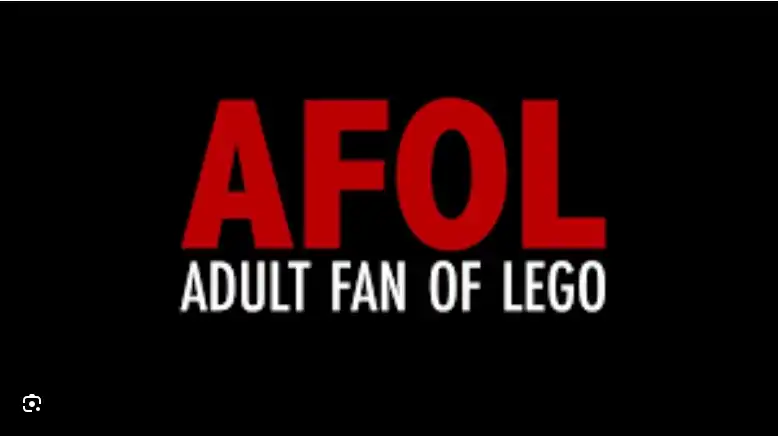
Despite the price of LEGO® bricks remaining around 10 cents per piece for decades, LEGO® has been actively expanding its product lineup targeted at AFOLs. Consequently, many of its sets have become larger and more expensive. Some of these sets, like the Millennium Falcon, contain over 7,000 pieces and cost around €850. The Titanic set boasts 9,090 pieces and is priced at €690.
Their marketing secret likely lies in the wonderful experiences and joyful stories associated with LEGO. Ask any AFOL, and they will recount the story of their first LEGO experience.
LEGO Customer Support
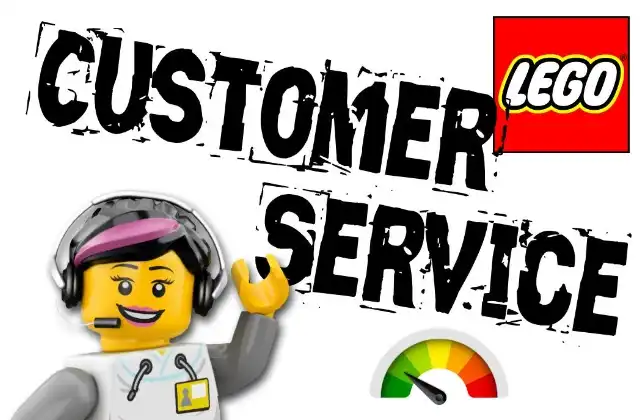
LEGO® offers a service for requesting replacement parts for damaged or missing pieces, so buyers don’t need to purchase a whole new set or look for second-hand parts. Instead, they can directly replace the needed pieces.
The company also supports the robust LEGO® Insiders program, providing rewards and free gifts for frequent customers to maintain interest in the brand.
Is There a Good Alternative to LEGO®?
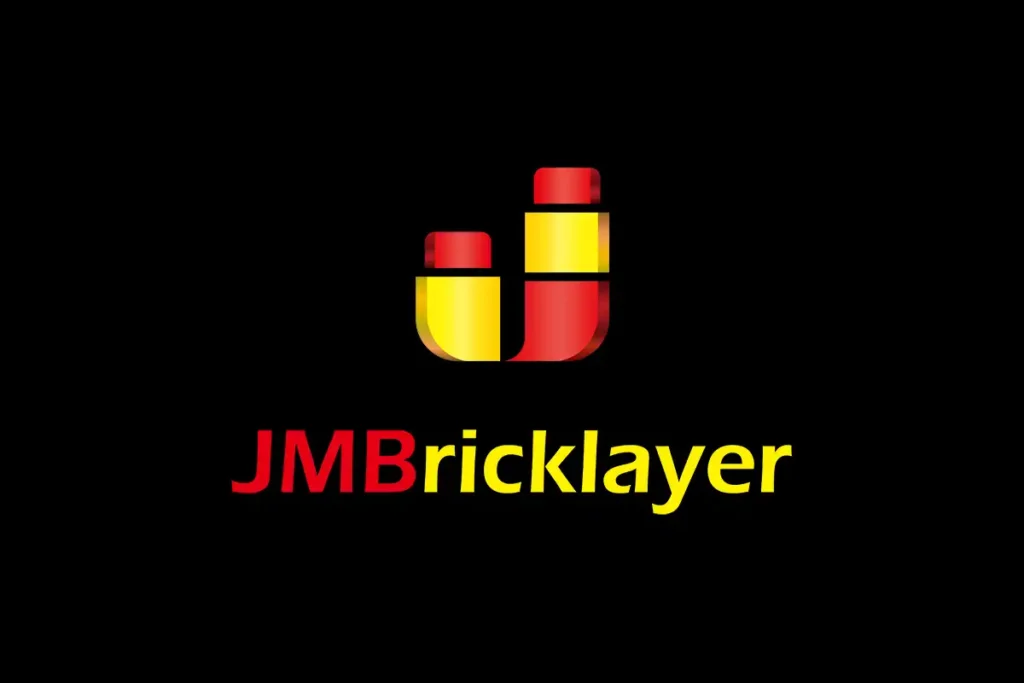
The purpose of this article is not to change the perception of LEGO® being expensive, but to analyze why LEGO® is so costly. We hope this article will be helpful to you!
For those on a budget, the good news is that there are now many alternative brands to LEGO®. Previously, I wrote an article about LEGO alternatives. In that article, we explored the top ten adult building block brands in China, including company backgrounds, featured series, and price ranges, to help you determine if they suit your preferences.
Almost all of these are compatible with LEGO®, which means you can expand your collection for less money!
As we delve deeper into the captivating world of LEGO and uncover the factors behind its pricing, we must acknowledge the passion and dedication LEGO enthusiasts put into their creations. Building with LEGO is not just a pastime; it is an art form.
While factors like licensing fees, premium materials, and meticulous design contribute to the high prices, there is a way to enhance your LEGO building and imaginative play experience.
What do you think of the LEGO brand? Are there any aspects of LEGO you’d like to know more about? Feel free to share your thoughts in the comments below!
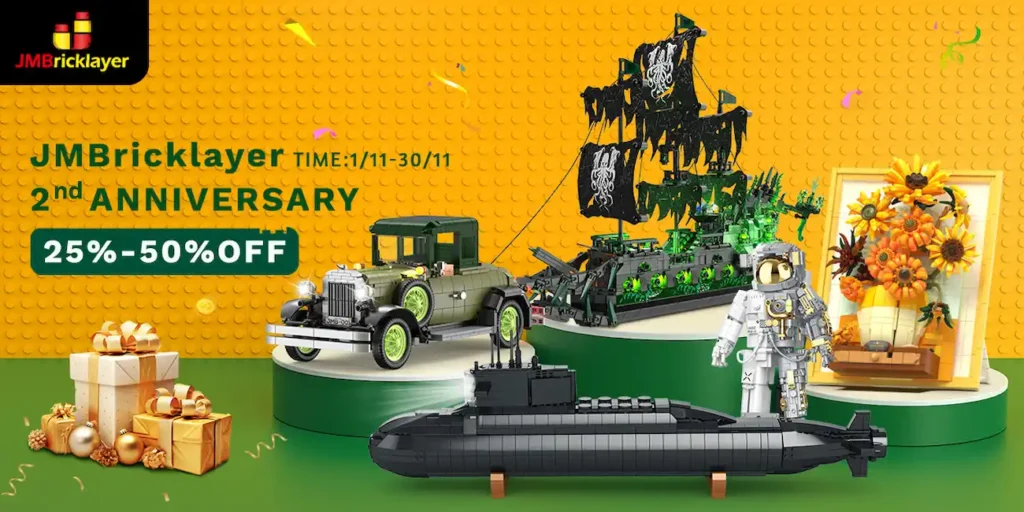
Big Announcement! November 2024 is JMBricklayer’s 2nd anniversary! Enjoy sitewide discounts starting at 25% off, plus tons of giveaways and prizes! New customers also get an extra $10 in points to spend. Don’t miss out!






37 Responses
I understand that many friends are curious about how JMBricklayer creates such beautiful bricks. Before unveiling the details, I explained how the LEGO company operates, so that in the following articles, you guys can better understand how amazing JMBricklayer truly is! I also hope to hear more of your thoughts, so feel free to share them on this Facebook post!
I grew up with lego but as an adult I prefer companies like JMBricklayer because of the multiple sets to be able to tell a story. I enjoy building these as it keeps me having a good mindset.
Great point! JMBricklayer’s sets really do inspire storytelling. What’s your favorite set so far?
I grew up with LEGO. Mr and my cousin were Building up pirate ships. I stopped tò build and tò have that hobby when me and my cousin got separeted… Recently I won a pirate ship with JMB and honestly the Memory of Legos went up in my mind. Building the pirate ship and the Parrot actually was really cool and full of emoticons After yes…
Great to hear LEGO brought back fond memories! What aspects of building the pirate ship and parrot did you find most enjoyable? Would love to hear more about your experience and how it compares to your past builds!
I mean when u are a child and build up pirate ship, u really think to be a pirate and tò be in the scenario…. When u are adult u think about the beautiful design and that u are creating an object d’ art that Will decorate yr flat. I think LEGO Is more expensive cause of the BRAND, reputation,patente. It Is like when u speak about Chanel or Prada… Why are they so expensive and Moschino not so expensive?????!?!??!
You make an interesting point about the shift in perspective from childhood to adulthood. As children, the imaginative play and adventure are paramount, while as adults, we often appreciate the craftsmanship and design. LEGO’s pricing, influenced by brand reputation and patents, mirrors luxury brands like Chanel or Prada. It’s fascinating how branding can elevate perceived value. What do others think about how brands influence our perceptions and purchasing decisions?
Thanks for the article, I didn’t know many things. Legos remind me of my childhood, when I played with my brother.
I understand that they have become famous internationally but they could lower the prices because many people cannot afford to buy them… obviously there are valid alternatives and JMBricklayer is an excellent company with low prices accessible to everyone
Thanks for sharing! That is a great point on affordability. Have you tried any other alternatives?
honestly not at the moment, just JMBricklayer
I still have two sets that I built many years ago, and I’m surprised at how their resale price increased. It’s missing a few pieces, but they are easy to find online.
That’s interesting! Which sets do you have? I’d love to hear more about them!
I get why Lego is so expensive but I am glad for all the alternatives.
Great point! What alternatives have you tried, and how do they compare?
Legos are awesome, both to build and display!
But the recent set pricing is frustrating, maybe because Lego paid too much for the licensing?
Maybe need to go back to the original success, where Lego made their own creative themes!
Agreed! What themes do you think LEGO should revisit?
I grew up on legos so this is really interesting to read about
Legos are such a classic! What are your favorite sets?
Lego prices are so high due to licensing. I wish there were a way for licensing to be cheaper but I full understand others need to make money too
Lego needs to have more non licensed sets.
Great point! How do you feel about Lego’s original themes?
I am proud to buy JM bricklayer sets! They are a great quality and some wicked awsome designs.
Absolutely! JM Bricklayer sets are indeed top-notch. Do you have any tips on which designs to try first?
I love the small builds the most
Absolutely! Small builds can be so charming and creative. What’s your favorite type of small build? Maybe we can exchange some ideas and tips! 😊
Disney licenses are in general just going to cost more
Absolutely! Disney’s licensing costs are higher due to their brand value and extensive market reach. Have you noticed how this impacts smaller businesses or creators? How do you think this shapes the market?
I’ve always loved Legos, but, back in the day, I would often get megablocks as they would offer themes I would prefer. Lego had the Bionicle, Star wars and Alpha Team sets I would buy!
That’s awesome! Mega Bloks had some great themes, too. Do you have any favorite sets? I’m a huge fan of Bionicle and Star Wars myself. It’s fun to see how different building blocks inspire creativity!
Love this article! Great work on getting all this information and even the videos.
Thank you! So glad you enjoyed the article and found the videos helpful. What parts stood out to you the most?
I truly believe the Lego magazine era was the peak of Lego. It made me so hyped for some sets. The new original IPs from Lego feel weaker. I know they moved to video game and tv shows (Ninjago for example), but what an era it was!
I totally get where you’re coming from! The Lego magazine era was iconic. While the new IPs have their charm, there’s something nostalgic about flipping through those magazines and dreaming of new sets. Anyone else miss those days?
It sometimes super hard to find the popular lego sets. My nephew wanted a star wars set from Lego and it took me a long time to find it.
Hey, how about making some MOC Star Wars sets on your own? I am writing an article about LEGO MOC, hopefully, it can help you in some ways.
I really wish I could find a Lego influencer job! That would be awsome.
Hey! Have you tried reaching out to Lego fan groups online? They share tips and opportunities. Also, creating content on social media could attract attention from Lego and other brands. Good luck!